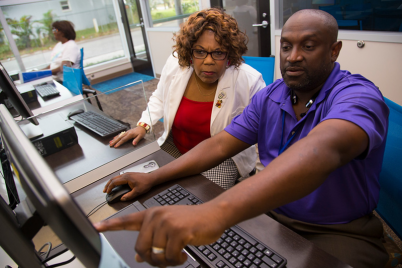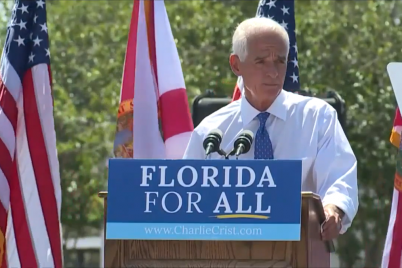By Faye Watson, Director, CEO, DAB Community Services, Inc.
What is a W9?
Questions related to the W9 are at the top of the list for those seeking to apply for economic relief due to the COVID-19 pandemic.
In IRS terms, the W9 is a Request for Taxpayer Identification Number and Certification issued by employers or other entities to individual or business entities receiving income. It is used for the purpose of verifying the name, address, and tax identification number for reporting purposes. The W9 is used complete the 1099 for tax reporting purposes.
With line 1 causing the most confusion and line 2 running a close second, this clarification may prove helpful.
Line 1 (REQUIRED) is the legal name that the business or individual uses on their federal tax as required by the IRS. The information on line 1 of the W9 must match the information used on your federal tax return as associated with your EIN (Employer Identification Number or Social Security Number).
Line 2 (IF DIFFERENT FROM LINE 1) is where you would put your business name, DBA name, trade name if different from Line 1. If it is the same, you do not have to make an entry on Line 2. This name is to help your customer identify you if the name on Line 1 is not the name you are known by. Some individuals enter the same information on line 2 as on Line 1. Doing so would not cause a problem however, it is not necessary. Remember, Line 1 is required and Line 2 is optional. The name on line 1 must match the name associated with the EIN or Social Security Number listed in Part I of form W9.
Line 3 Federal tax classification: (CHECK ONLY ONE BOX) Check appropriate box for federal tax classification of the person or entity whose name is entered on line 1.
Because the majority of questions about the W9 came from individuals who are sole proprietors, I included the following from the IRS.gov website:
The IRS defines a sole proprietor as “someone who owns an unincorporated business by himself or herself.” It is the simplest and most common way to start a business. Completing a Schedule C with your 1040 tax form showing that you have business activity is about the only thing that shows that you are a sole proprietor to the IRS.
You do not have to take any formal action to form a sole proprietorship. The status comes automatically from your business activity. In fact, you might already be a sole proprietor and not know it.
Chiropractors, accountants, and freelance designers are all possible examples. Also note that while a sole proprietor has to be an individual, individuals are not always sole proprietors. Individuals do not always own a business.
If the Limited Liability Company is selected, a classification of C-Corporation, S-Corporation or P-Partnership must be entered.
NOTE: Barbershop or Hair Salon booth renters usually file as a sole proprietor, completing a Schedule C.
Line 4: Exemptions. If you are exempt from backup withholdings and are FATCA reporting enter in the appropriate space in line 4 any codes that may apply to you.
Line 5: Enter the address used on your tax return. This is the address where the requester of this form will mail your 1099;
Line 6: Enter City, State, Zip;
Line 7: Requester — is optional. However, it is recommended that you enter the name of the requester, so that no one else can use the form to claim that they paid you.
There is no need to rush when filling out the W9. Remember, an incomplete W9 form could cause a delay or denial of some COVID-19 grants or other funding. The following would make a W9 incomplete:
Nothing entered in Line 1;
Name in Line 1 does not match the EIN or Social Security Number in Part 1;
Federal Tax classification in Line 3 does not match the EIN or Social Security Number in Part 1 of the W9 form and failure to select a classification if LLC selected;
Address, City, State, Zip in Line 4 and Line 5 are not filled out;
Certification: A W9 form that is not certified in Part II with a signature of a U.S. person.
 Faye Watson is director of DAB Community Services, Inc., (DABS) a 501(c)(3) organization that works to develop and build educational workforce development and training programs, small and mid-sized business capacity, and community services initiatives through partnerships. She attended St. Petersburg Jr College and Florida A&M before earning her MBA at Tampa College. She is a former Sarbanes Oxley Compliance Auditor with experience across numerous industries with an emphasis in process documentation of internal controls. She has over 30 years of General Accounting experience as well as years of experience as an independent business consultant.
Faye Watson is director of DAB Community Services, Inc., (DABS) a 501(c)(3) organization that works to develop and build educational workforce development and training programs, small and mid-sized business capacity, and community services initiatives through partnerships. She attended St. Petersburg Jr College and Florida A&M before earning her MBA at Tampa College. She is a former Sarbanes Oxley Compliance Auditor with experience across numerous industries with an emphasis in process documentation of internal controls. She has over 30 years of General Accounting experience as well as years of experience as an independent business consultant.
DABS is currently Mitigating the Risk of COVID-19 through a Stop the Spread initiative helping beauty salons and barbershops get back to work, apply for relief and position themselves for success. Visit dabcares.org for more information.












